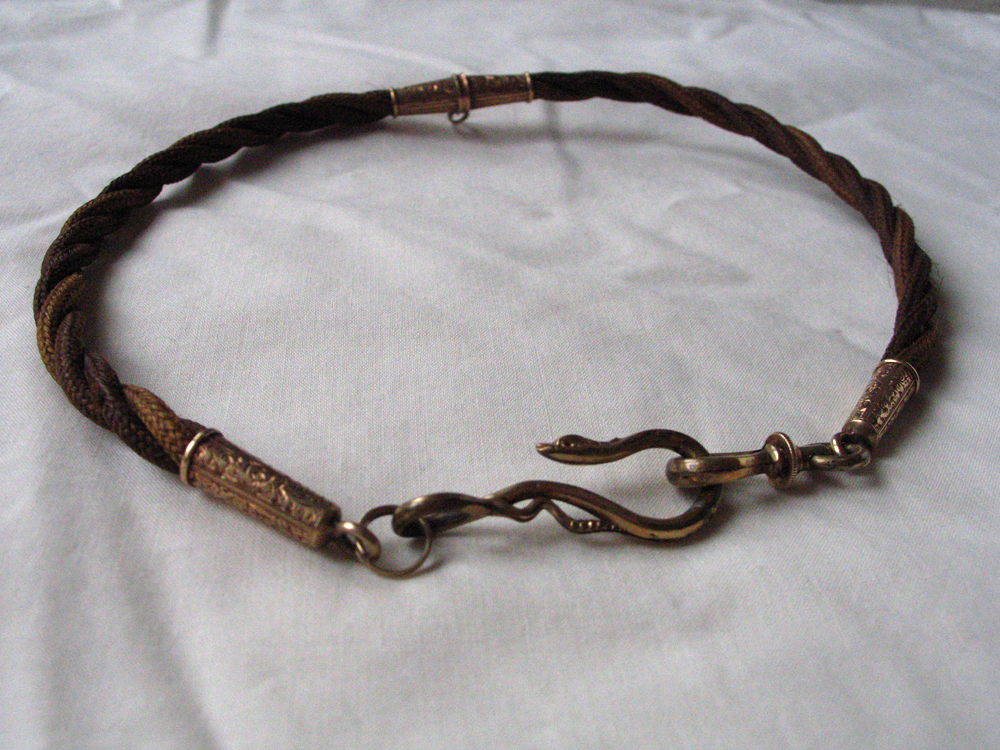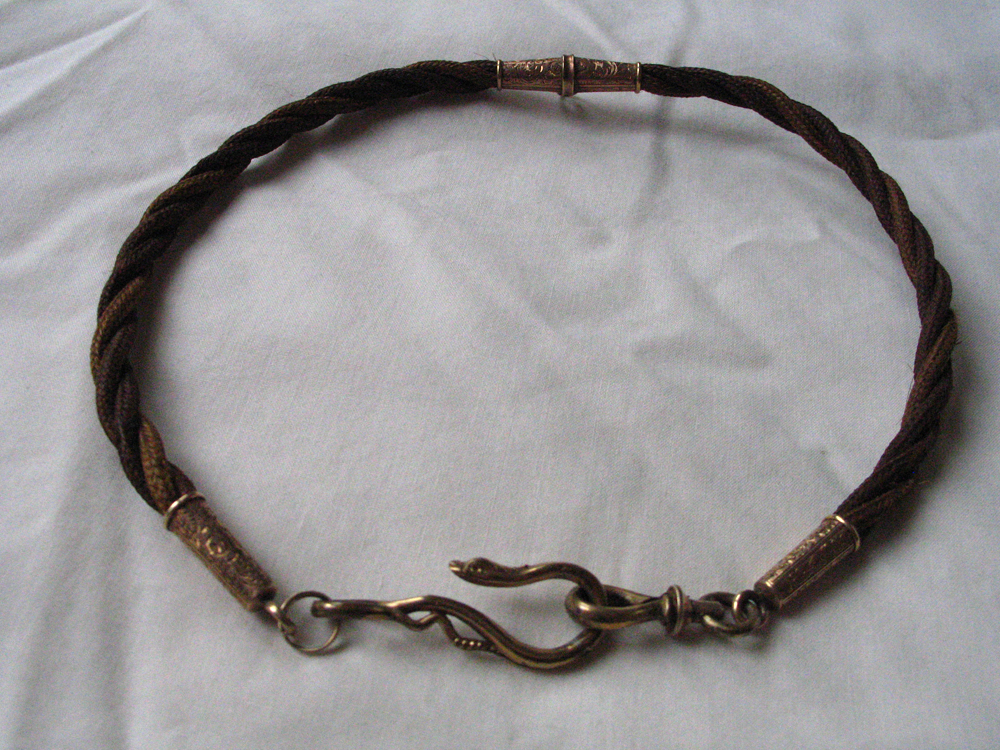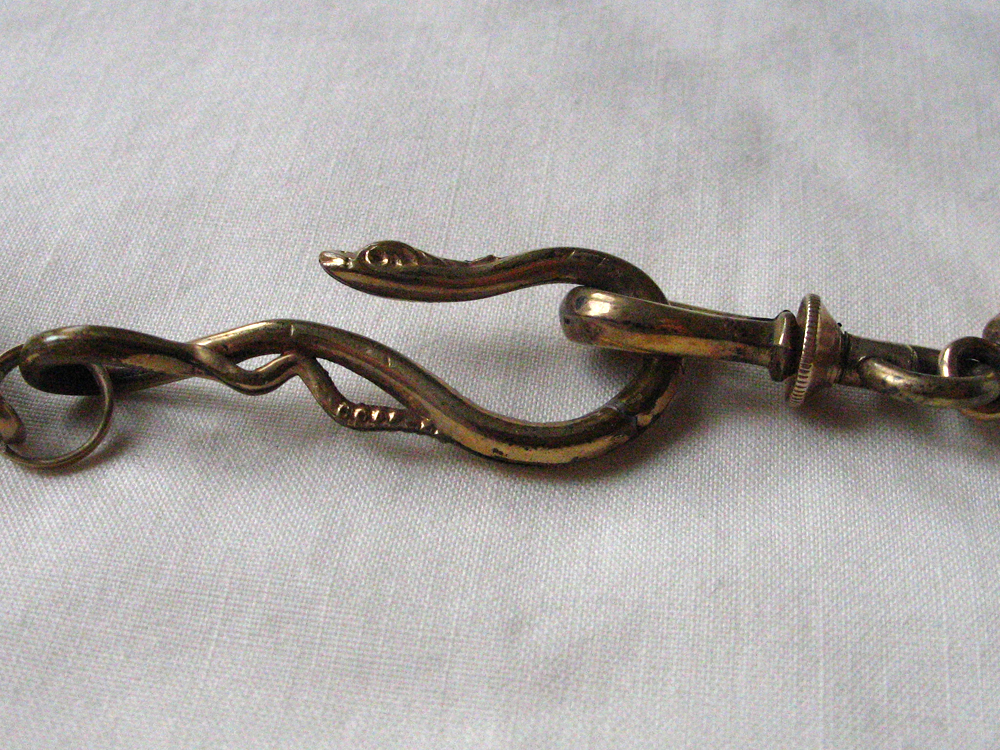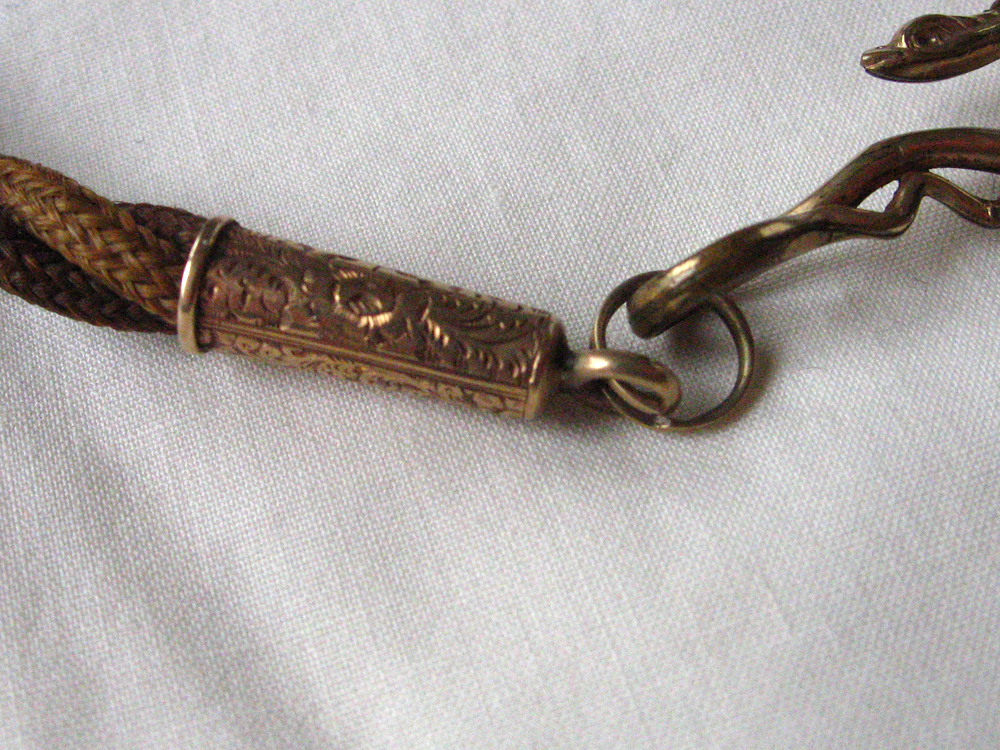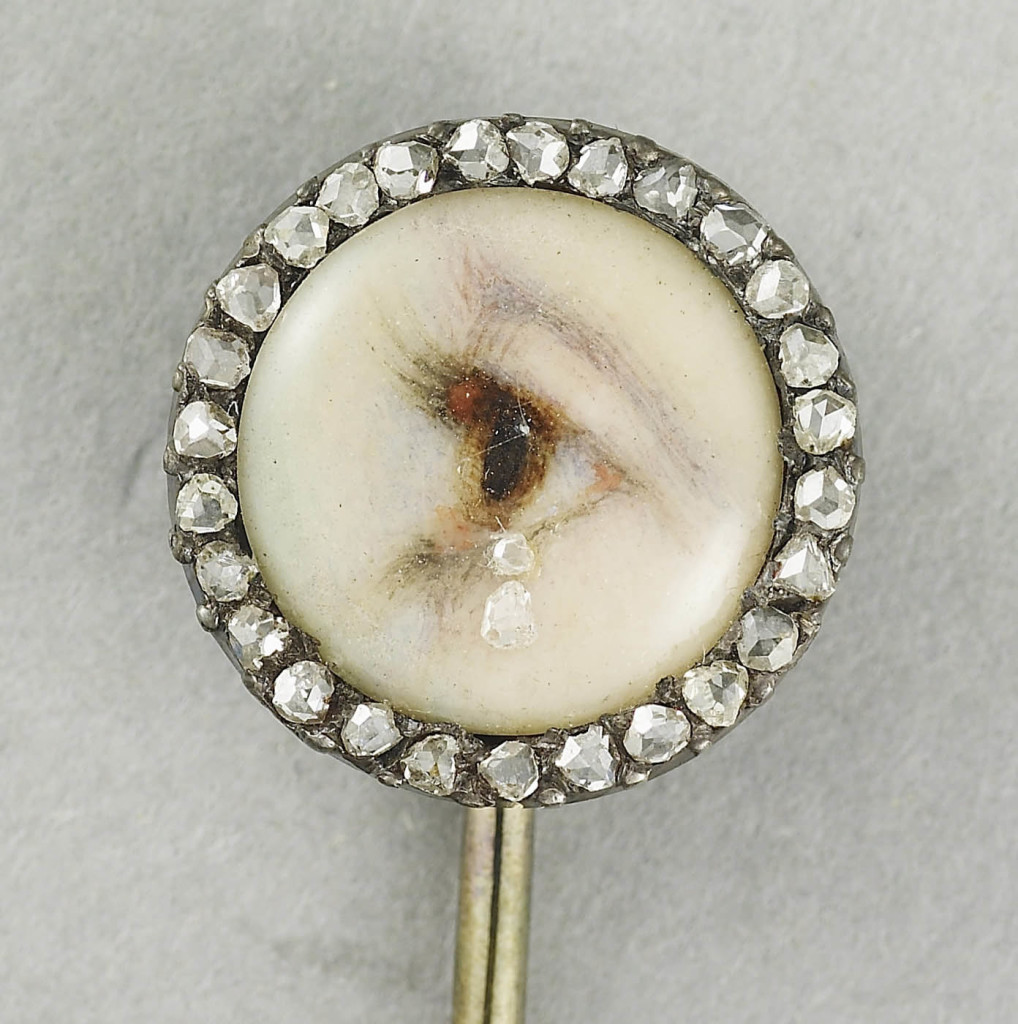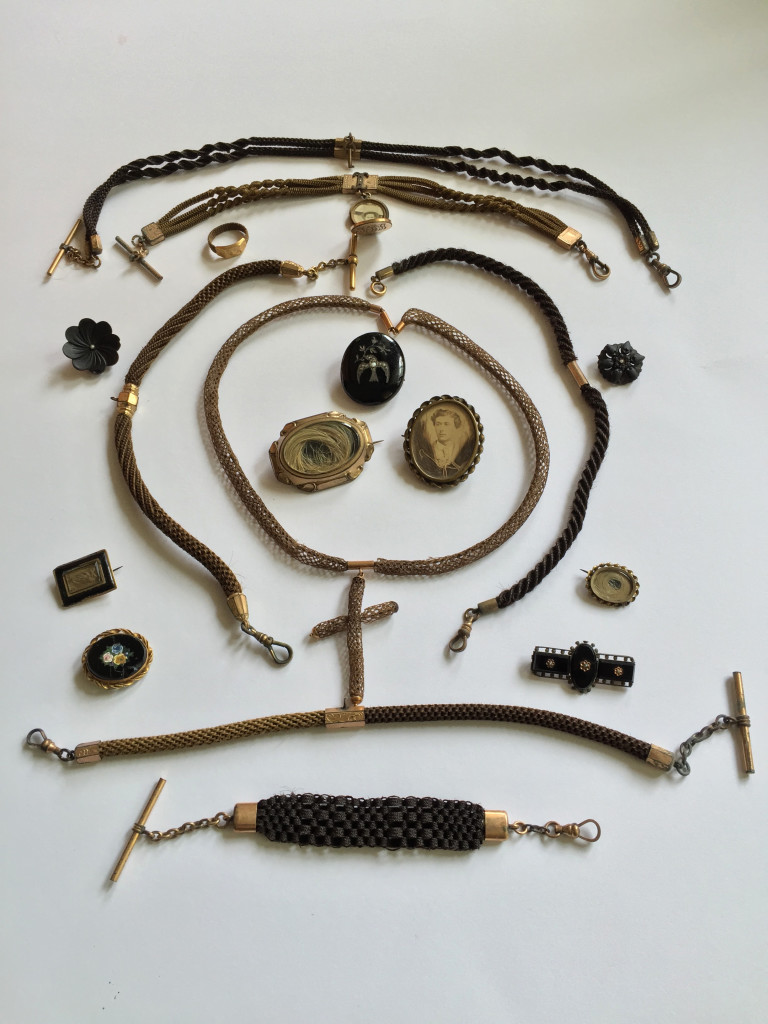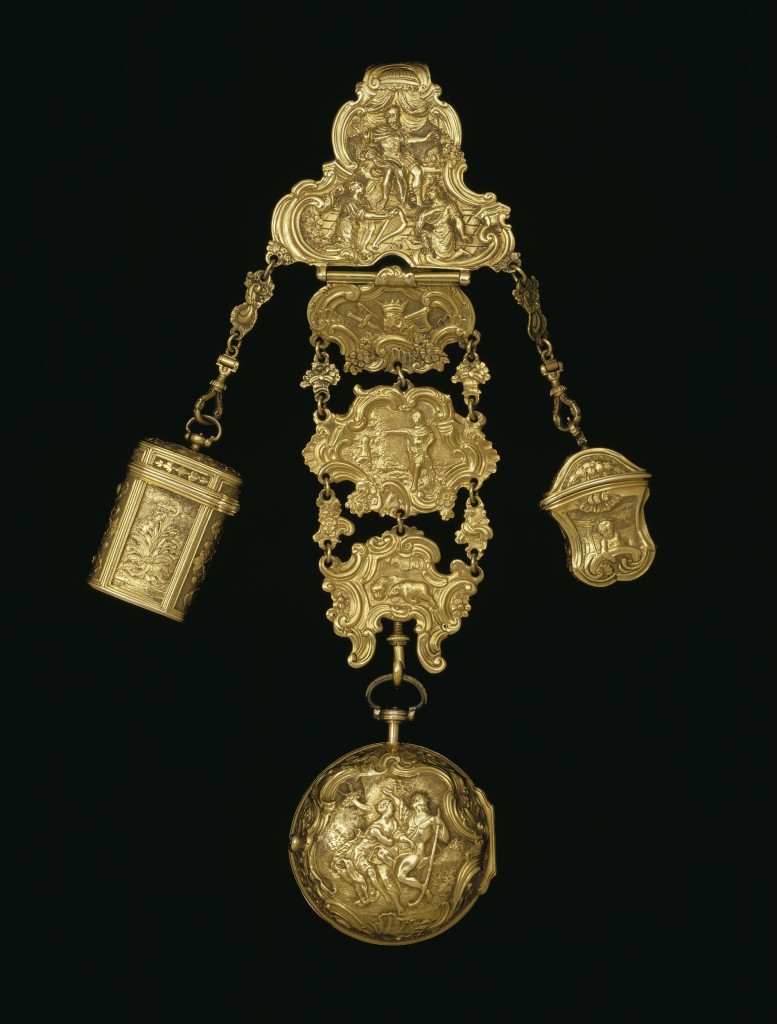A Victorian Hair Fob Chain
It’s been a while since I did a good analysis of a piece, life sometimes gets in the way of memorials, but without living, how can there be anything to reflect upon? So, for today’s warm-up session, let’s get intimate with this wonderful hairwork fob chain, a piece that reflects sentimentality and I think are a great place to start your collection. Why is that?
Firstly, they are cheap to buy. Fob chains (those that haven’t been melted down for precious metal or converted into a necklace – a popular thing during WWI) are redundant fashion. In terms of the mainstream, once the wristwatch became cheap and miniaturisation/mass production led to the wrist taking up the real estate for the watch, cumbersome pocket watches seemed dated and obsolete. Necessity of using the wrist for a quick glance to see what the time is and have your hands free was a very handy (excuse the pun) thing to have during wartime as well.
Secondly, we have hair work as a less than marketable material for audiences today to comprehend and use. Hair work deteriorates rapidly when worn close to the skin due to oils and temperature change which accelerate rot and bacteria growth. In my youth, I’ve nearly lost two pieces due to this. Also, it’s scratchy and uncomfortable to be adapted to a necklace, though they do exist. Different weaves can be a little softer, but rule #1 still applies.
So, why is it great for the collector? Look at the fittings above. These, often rolled gold or Pinchbeck, show the symbolism-filled Rococo Revival, so popular in the latter 19th century and can be roughly dated due to their mass production and catalogue ordering. Yes, you can buy reproduction jewellery/store catalogues and easily spot the age of a piece due to its fittings. And, as they aren’t precious enough to destroy, melt down or adapt, the fittings often exist today.
Take a look through the Symbolism Sunday series and see if you can spot all the symbolism in the flowers. Often, these are disregarded ads being common Victorian design-work, but the symbolism actually enhances the piece and we have to pay attention to these nuances if we’re going to determine what the piece was worn or used for. The quick answer is ‘mourning’, but look a little closer and let’s think about it for a minute.
The hairwork is a dual-colour weave. Yes, we have two different kinds of hair used. This would have been colour matched professionally from sourced hair, rather than donated by the wearer. So, we have the idea of two kinds of hair entwined. Love, even when two are apart is what we have to consider. Then, it’s how it was used. This was worn attached to the vest or waistcoat, affixed through the buttonhole, with the watch at one end. Usually in the centre-fitting, you will find charms hanging (often the acorn, flowers, etc). This piece wasn’t so lucky, but it makes up for it with the remarkable serpent clasp.
Here is where you can find a more concrete date for the piece, though they were mass produced between the 1880s and 90s both in Europe and the US. Due to higher levels of travel and mass transit with a very mobile social structure, identifying a piece like this to a certain area is much harder. Here, the serpent clasp was seen in several fashion warehouse catalogues and could be interchanged for piece selection and production, so it could ideally be narrowed down to stockist.
Back to the symbolism of the serpent and how it’s coiled back over itself, forming the loop of the entire chain, creating the eternity circle. Once again, the love motif shines through.
So, we have a very sentimental piece and quite a common one that was part of a gentleman’s daily wardrobe. Hairwork was a common and relatively cheap material that was quite ubiquitous in mainstream fashion, so finding a gentleman wearing this as a nod to his loved one would be quite typical.
How was that, burgeoning jewellery historian? Why not track some down (you shouldn’t be paying over $150 for a decent chain) and do an analysis, or go through the Art of Mourning archives and do your own appraisal?




